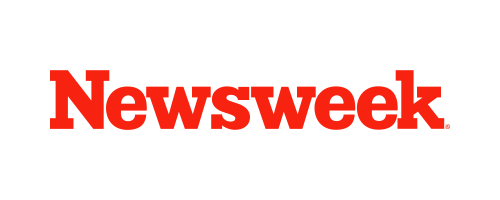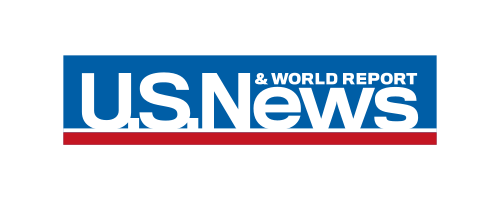Skip to the good bit
ToggleKey Takeaways:
- A line of credit (LOC) provides flexible access to funds, similar to a credit card, with interest charged only on what you borrow.
- LOCs can be used for personal, home, or business needs, making them versatile financial tools.
- Unlike lump-sum loans, LOCs allow repeated borrowing during the draw period without reapplying.
- Managing an LOC responsibly helps maintain financial health while offering security for emergencies or planned expenses.
Introduction to Lines of Credit
Managing your cash flow can be challenging, especially when unexpected expenses arise. Life is full of surprises, and whether you’re an individual hoping to cover a sudden car repair or a small business owner aiming to bridge the gap between invoicing and payment, access to extra funds when you need them can be critical. A line of credit (LOC) offers a safety net—a flexible loan from a financial institution that lets you borrow up to a set limit, often without having to reapply each time you need a draw. Unlike traditional lump-sum loans, a line of credit acts more like a credit card in that you can draw on the funds as needed, paying interest only on the amount you use, not on the entire limit available to you. Many people turn to a Line Of Credit Lender to secure financing for everything from home renovations to short-term business needs, because it allows interest to accrue solely on the amount borrowed, not the entire credit line.
Types of Lines of Credit
Not all lines of credit function identically. Several main types exist, each designed for specific usage scenarios and borrower profiles, and knowing the difference is crucial for making informed choices:
- Personal Line of Credit (PLOC):An unsecured product based largely on your creditworthiness, suitable for ongoing personal expenses or occasional financial gaps, such as covering tuition, household purchases, or vacation costs. You don’t need to put up collateral, but having a higher credit score is key to approval and favorable rates.
- Home Equity Line of Credit (HELOC):This LOC is secured using the equity in your home, meaning your property serves as collateral. Because it’s less risky for lenders, it typically results in lower interest rates than unsecured options, and the lines are often larger, making them popular for home renovations or major purchases.
- Business Line of Credit:Businesses use these lines to support daily operations, bridge cash flow gaps, or fund seasonal inventory and payroll needs. This flexibility can help a company thrive in unpredictable markets, providing financial support during slow periods or waiting for invoices to be paid.
Each type of credit line best suits certain needs, so understanding your goals will help you determine which is best for you.
How Lines of Credit Work
To make the most of a line of credit, it’s important to understand its core structure and the three main components that shape your borrowing and repayment experience:
- Credit Limit:This is the maximum sum you can borrow, set by your lender based on your credit profile, income, and current debt load. The limit offers a spending cap that reflects your financial stability and the lender’s level of risk.
- Draw Period:The span during which you may access funds, typically lasting several months to a few years. During this period, you can borrow, repay, and re-borrow as needed, providing ongoing credit access until the draw window closes.
- Repayment Period:Once the draw period ends, you enter the repayment phase—no new withdrawals are allowed, and you pay off any outstanding balance plus interest over a scheduled timeline, giving you a clear path toward zeroing out the balance.
A line of credit gives you revolving access to funds, but it requires discipline to keep track of borrowings, repayments, and interest.
Pros and Cons of Lines of Credit
While LOCs offer desirable flexibility and access to funds, they also have both strengths and weaknesses that every borrower should consider before applying:
- Pros:Interest is charged only on the amount borrowed, not the approved credit limit, keeping costs lower if you only use what you need. The terms are highly flexible: you can borrow any time during the draw period, pay off your balance early without penalty, and re-borrow repeatedly. Rates are frequently lower than those on many credit cards, particularly secured lines like HELOCs.
- Cons:Variable interest rates can mean fluctuating payments, which may make budgeting challenging if rates rise unexpectedly. Hidden fees, such as origination fees or annual account maintenance charges, can add to the cost. The tempting flexibility may also lead to excessive borrowing and debt accumulation if not used responsibly, potentially damaging your credit and causing financial stress if balances get too high.
Weighing these pros and cons will help you decide if an LOC fits your financial scenario.
Common Uses for Lines of Credit
Individuals and businesses use lines of credit for several practical purposes, mostly to handle expenses that are intermittent, unexpected, or too large for monthly cash flow:
- Home Renovations:Homeowners often fund improvement projects or repairs with a HELOC—making upgrades that can boost property value over time and allow for phased work that matches their budget and schedule.
- Emergency Expenses:LOCs can bridge financial gaps caused by unexpected costs such as medical bills, urgent repairs, or sudden travel needs, offering peace of mind during stressful times.
- Debt Consolidation:Lines of credit can streamline multiple debts into a single, more manageable, and often lower-interest monthly payment, simplifying your finances and potentially saving on interest costs.
Many also use business lines of credit to purchase inventory in anticipation of busy seasons or to cover payroll in slow months. At the same time, families may tap a line of credit for larger events like weddings.
How to Qualify for a Line of Credit
To be approved for a line of credit, lenders will typically look at the following eligibility factors, which help them decide both your creditworthiness and the most appropriate limit and rate for your circumstances:
- Credit Score:A strong credit history and higher score open doors to more favorable terms and higher credit limits. Your borrowing and repayment history is often the most important factor in credit decisions.
- Income Stability:Demonstrating reliable income reassures lenders of your ability to repay borrowed amounts, making regular paychecks or steady business revenue key to approval.
- Debt-to-Income Ratio:A lower ratio of debt payments to income suggests good financial health and increases your chances of approval. Lenders want to see that you aren’t already overburdened with debt.
Depending on the type of LOC and lender, you may also need to provide collateral (especially for secured credit lines), details about your assets, or business financials. Preparing these documents in advance can speed up the approval process.
Managing a Line of Credit Responsibly
To leverage an LOC to your benefit without falling into debt traps, it’s wise to employ careful planning and disciplined financial habits:
- Only borrow what you truly need, keeping future repayments manageable—and ensuring you can still meet all your obligations.
- Always make payments on time to avoid accumulating excessive interest and to maintain a healthy credit score. Late or missed payments can hurt your credit and trigger penalty fees or rate increases.
- Monitor your interest rate and be mindful if it is variable—interest costs may rise unexpectedly, impacting your budgeting and increasing your overall borrowing cost.
Responsible use is key, as improper management of open credit lines can negatively affect your financial standing. Regularly review your statements and avoid using an LOC for routine expenses you cannot afford to repay soon.
Final Thoughts
Lines of credit offer a versatile financial resource for personal and business needs, standing out for their unique combination of flexibility and control. By understanding the different types, their advantages, and the keys to responsible management, you give yourself the power to use this borrowing tool wisely—strengthening your financial resilience. This foundation lets you make the most informed decisions possible for your circumstances and helps you respond to planned and unforeseen life events with greater confidence and less stress.







